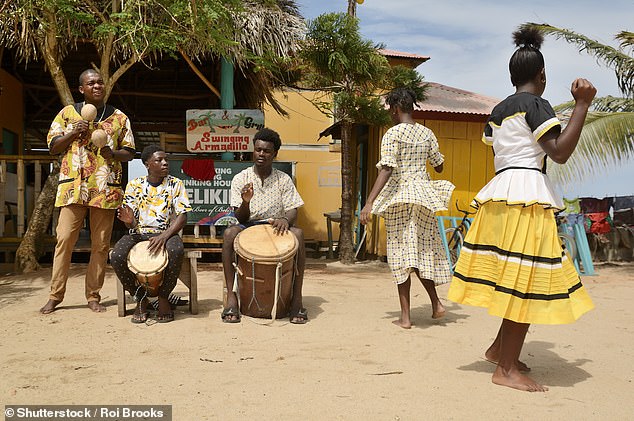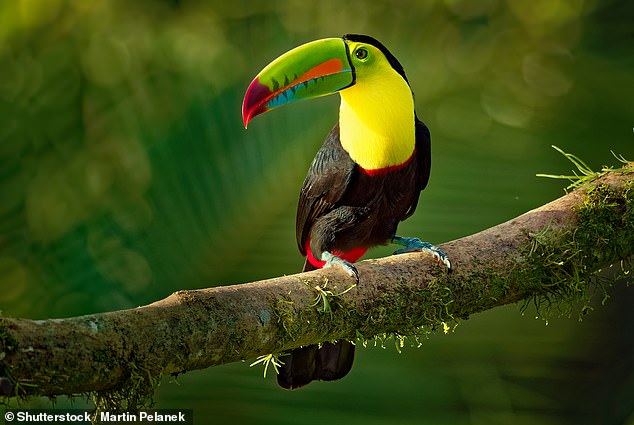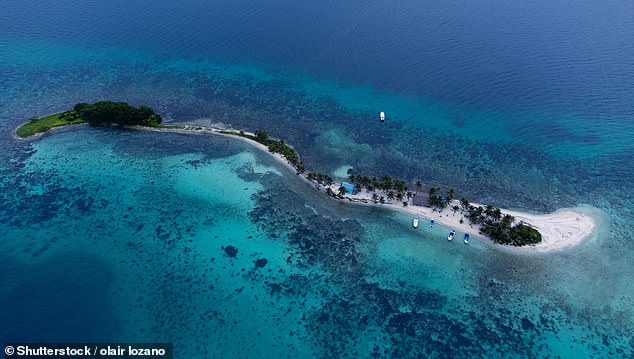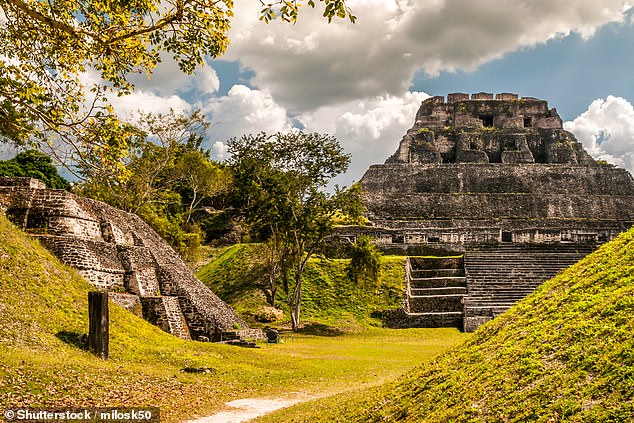The beauty of Belize: This Central American country may be small – but it’s packed with jungles, wild animals and some of the world’s best snorkelling
Dressed in camouflage and armed with a machete, Narcisio looks like a guerrilla. But this is quiet Belize and Narcisio is a farmer. He uses his machete to chop the fruits before opening them with a stick to avoid damaging the delicate seeds.
“Theobromine,” he says. ‘Food of the gods and packed with 40 times more antioxidants than blueberries.’
He’s talking about cocoa. We’re in a jungle where its trees nestle under the canopy and Montezuma oropendola birds flit about, for a bean-to-chocolate experience. “Did you know that the Mayans drank chocolate in 1800 BC,” asks Narcisio.
Later I go to the Mayan Center, where their descendants still grind cocoa beans by hand on stone rollers. They make the tastiest (80 percent) chocolate I have ever tasted.
Belize is a compact, politically stable country with an impressive cultural wealth and biodiversity. Most places are accessible by car and road signs warn of the crossing of numerous exotic animals, such as tapirs, jaguars, reptiles and armadillos.
Teresa Levonian Cole travels to Belize in Central America. Above, Tobacco Caye, an island off the coast of the country
Its popularity as a holiday destination is increasing – helped by the fact that the former British Honduras still has English as its official language.
A 2022 visit by the then Duke and Duchess of Cambridge often comes up in conversations. “There was Kate,” Narcisio says, pointing to the tree stump I’m standing in now. “She said she had no idea where chocolate came from!”
Following in the footsteps of the Royal Family, my next stop is the village of Hopkins, where I will have lunch at The Lodge at the Jaguar Reef resort. I enjoy delicious lobster and conch ceviche at the Big Dock Bar, while a manatee plays in the Caribbean waters below.

Above, locals performed a traditional Garifuna performance in the village of Hopkins

Teresa checks into the Ka’ana Resort in San Ignacio, where elusive toucans can be spotted (file image)
But it is the Garifuna people who bring me to this place. Their ancestors were shipwrecked in 1635 when a Spanish slave ship broke down off the coast of St. Vincent. A century later, the Garifuna with their distinctive Afro-Caribbean culture arrived here.
I feared the Garifuna Experience would be contrived, but I’m welcome for a music and dance performance – the highlight being a lesson from Grammy nominee Warren Martinez, on traditional instruments. Meanwhile, the women teach the guests how to cook traditional hudut (coconut fish stew) over a wood fire.
My driver Dirk remembers William and Kate being dragged by villagers to dance as we traveled to my hotel, Itz’ana in Placencia. My enormous beach loft overlooks powdery sand, yards from the ocean.

A highlight of Teresa’s trip is picnicking on the ‘deserted’ Laughing Bird Caye

Teresa visits the Mayan ruins at Xunantunich, home to the second tallest structure in Belize
Once a hippie hangout, Placencia is now home to the best of Hollywood – thanks in large part to film director Francis Ford Coppola, who opened his 25-villa Balinese-style Turtle Inn here in 2001.
Today, smart hotels line the peninsula, whose capital remains a charming jumble of colorful Caribbean-style houses, wood carvers and beach bars.
I’m going snorkeling with huge loggerhead turtles amid schools of nurse sharks. But best of all is a picnic on the deserted Laughing Bird Caye.
No visit to Central America is complete without a visit to a Mayan ruin. So we drive inland to Ka’ana Resort, in San Ignacio, set in lush tropical gardens (where elusive toucans can be spotted).
I’m going on a horseback trek to Xunantunich, the ancient pyramid, the second tallest structure in Belize. The site is deserted, but for a family of Mennonite farmers dressed in 17th century Dutch style, like extras from the film Witness. They are a large community in Belize, they tell me, and show visiting American relatives the sights.
This country is full of surprises and with islands like Tobacco Caye and South Water Caye still to explore, I barely scratched the surface in a week. Reason enough to return (I hope).
